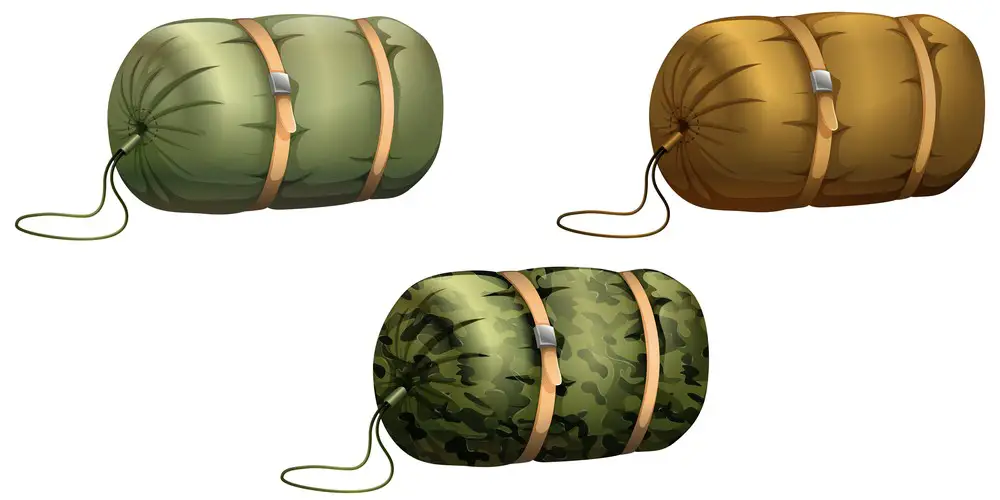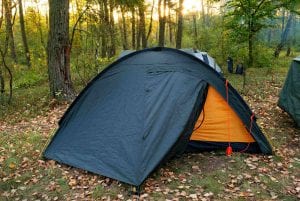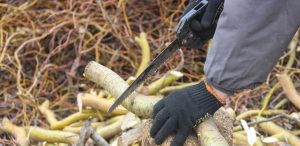
If there’s one thing that really has outdoorsy folk rubbing their thighs with glee, it’s getting stuck into a debate with no correct answer.
Boots or trail shoes? Tent or hammock? Skis or snowshoes? Gerber or Victorinox? And don’t — whatever you do — get the conversation started on sock preferences.
An old favorite among these circular discussions is the merits of down vs synthetic sleeping bag insulation. As with all such questions, the answer will ultimately come down to your own preference, but there are plenty of factors worth considering:
- Down bags provide more warmth for less weight. They often pack down smaller and can last many years if you look after them.
- The main downside is that down bags don’t insulate very well when they get wet.
- Synthetic bags perform better than their down counterparts in wet conditions, and they’re also much cheaper.
- However, synthetic materials are usually heavier and bulkier than down.
- When you’re choosing a bag for cold weather, measurements like “fill power” for down sleeping bags and “GSM” for synthetic fill can be misleading, so it’s best to go on the manufacturer’s temperature ratings.
- There can be ethical and environmental concerns with both down and synthetic fillings.
Benefits of Down Bags
Excellent Warmth to Weight Ratio
Down sleeping bags are filled with the soft and super-fine fluffy insulation that sits underneath a bird’s feathers. The down used in high-end bags usually comes from geese, while cheaper bags might use duck down or a combination of the two.
When you think about it, nature has spent more than 150 million years developing a substance that will keep birds warm without making them too heavy to fly — and down is the result. As far as warmth to weight ratio goes, there’s simply no synthetic material that can match it (yet).
They Pack Down Small
Down’s incredible insulating powers stem from the fact that the tiny filaments curl (or “loft”) to create a soft cushion of tiny fibers that trap warm air pockets very effectively. This also means that a down bag can be compressed to a very small size for transport.
It’s worth remembering that leaving the bag squashed in a stuff sack for long periods of time will eventually damage the down, so when you get back home from your camping trip, it’s important to store the sleeping bag loosely in a larger “loft sack.”
Down Is Long-Lasting
For something so fine and apparently fragile, down can be remarkably durable. It needs to be stored and maintained correctly, but take decent care of your down sleeping bag and it could last for decades.
Downsides to Down Bags
They Don’t Work Well in Wet Conditions
Getting a down bag wet is a mistake you only make once. Down may well be a miraculous substance when it’s dry, but introduce water into the mix and that luxurious, pillowy loft will fall flat and take on the consistency of clumpy wet cardboard.
It loses its ability to trap heat, you will not get a good night’s sleep, and it can take days to dry out.
In more recent years, however, manufacturers have been developing water resistant treatments that can alleviate this problem. Some of these are pretty impressive — Therm-a-Rest claims that the Nikwax Hydrophobic Down they use in their bags absorbs 70% less moisture and dries three times faster than the untreated equivalent.
They Lose Insulation Over Time
You’ll notice that there are always a few wisps of down floating around the tent in the morning. Down fill is so fine that, as time goes on, the fibers will begin to work their way out through the skin of the sleeping bag. Eventually this can reduce the warmth and create cold spots.
More significantly, dirt and body oils will stop the down lofting properly, and will reduce its performance. The more you use the bag, the more dirt and grease will get through into the filling — particularly if you’re a thru-hiker camping out for weeks or months on end.
Fortunately, down is more durable than it looks. Washing and drying the bag with special detergent can restore its performance to some extent, but there are also specialist companies that can deep-clean the filling and top it up if need be.
You’ll end up with a down sleeping bag that’s as good as the day you bought it — and at the fraction of the price of a new one.
Here at Effortless Outdoors, we’re still using a thirteen-year-old North Face Blue Kazoo that’s been reconditioned three times.
Benefits of Synthetic Bags
Better in Damp Conditions
While down insulation offers superior warmth for weight under normal conditions, heavy rain is down’s Achilles heel, and a synthetic bag will retain its insulating properties much better if you get it wet.
Even the water resistant coating on hydrophobic down can’t really compare, and there’s the added bonus that synthetic bags also tend to dry out much more quickly.
It’s on account of this water resistance that synthetic insulation is sometimes more popular with sailors and paddlers, who can find it harder to keep their bag dry.
Easier to Maintain
The fast-drying properties of synthetic insulation also make it quicker and easier to wash — as anyone who’s had their down bag hanging on a washing line for three days can attest.
While most synthetic bags are pretty low-maintenance, those with stiffer synthetic fillings may well be less likely to clump up after a wash — making them a good option for guest bedding that gets laundered more often.
Cheaper
There’s no getting around the fact that even slightly less expensive duck down insulation is still a premium product. For a high-quality three-season sleeping bag, you could be paying $100 for the synthetic fill option versus $150 for duck down or $400 for top-quality goose down.
The difference can be even more pronounced for summer season bags. You can pick up a perfectly serviceable synthetic bag for $20, and if you’re only going to be car camping with the family on your summer vacation, there’s probably no need to drop $300 on an ultralight down version with a similar temperature rating.
Downsides to Synthetic Bags
Shorter Overall Lifespan
Unlike down insulation — which can be cleaned and/or reconditioned to boost its performance — there’s no real way to restore a synthetic bag once the fibers have started to deteriorate.
Of course, there are a number of different synthetic insulations and some will be more durable than others, but it’s worth knowing that the lifespan might not be quite as good as a down bag.
It’s the stuffing, scrunching, and washing that tends to damage synthetic filaments — so you can eke out your bag a bit longer by keeping it stored loosely in a large sack when you’re not on the trail, and by only washing it when it’s actually dirty.
Bulkier and Heavier Than Their Down Counterparts
As you’ll know if you’ve ever owned a synthetic bag — especially a cheaper one — getting it back into the stuff sack in the morning can be an absolute pig.
Synthetic fibers don’t compress nearly so well as down, and they’re usually heavier to boot.
However, that lower warmth to weight ratio isn’t always a problem. If you’re traveling by car, boat, or even canoe, weight and bulk won’t be as much of a concern as it is for backpackers — and the benefits in terms of cost and water-resistance may just win out.
Down vs Synthetic Sleeping Bag: Understanding Insulation
Down Sleeping Bags and Fill Power
“Fill power” is a way of measuring the quality of down used in a sleeping bag or jacket, but it doesn’t tell you how warm the sleeping bag is. For that, you still need to look at the manufacturer’s recommended temperature ranges.
Higher-grade down with better lofting performance will fill a larger space — providing the same amount of insulation for a smaller weight of down — and this is what fill power tells you. For example, the lightest, warmest, most compact down sleeping bags will have a fill-power of at least 800 (and often as much as 900).
It’s a measure of how much space (in cubic inches) a single ounce of down will expand to fill. For example, one ounce of 700 fill-power down will take up 700 cubic inches of space.
What this means is that fill power ratings are really a measure of warmth vs weight. That’s why you’ll see some 800 fill-power bags with a comfort rating of 37°F, and others with the same fill power and a rating of -13°F. The quality of the down is the same, but the warmer bags just contain more of it.
Types of Synthetic Insulation
Broadly, there are two types of synthetic sleeping bag insulation: continuous filament and short staple fibers.
Continuous filament is stiffer, more densely packed, and more durable, while short staple is softer and more akin to down — though short staple fibers are more prone to breaking down and clumping up.
The level of synthetic insulation in a sleeping bag is often expressed in terms of GSM (grams per square meter), but this can be a bit misleading since not all synthetic fills are created equal.
At the upper end of the market, some gear manufacturers have put a lot of effort into developing synthetic fillings that offer much improved warmth for weight, and for this reason it’s important to go by the suggested temperature ratings rather than just the GSM.
Synthetic vs Down Sleeping Bag: Ethics and Environmental Considerations
Animal Welfare
In the last ten years, the outdoor gear industry has taken repeated maulings over the animal welfare abuses involved in down production.
Investigations in 2012 revealed that most manufacturers weren’t asking any meaningful questions about how the fill for their down jackets and sleeping bags was being produced, and that many of the ducks and geese involved might have endured appalling cruelty like live-plucking or force-feeding.
As one outdoor writer put it, “If you own a pre-2012 down jacket or sleeping bag, chances are high there’s some down from birds that had suffered a short, brutish life of force-feeding jostling around in there.”
Since then, the industry has made huge efforts to change. Many have signed up to the Responsible Down Standard (RDS), which stipulates among other things that the down must be a by-product of the food industry, and that the birds cannot experience live-plucking or force-feeding.
It’s a good start, but critics point out that 80% of the down we use comes from China, where it’s very difficult to enforce US and European welfare standards on animal products.
Every now and then, investigations from animal welfare charities find evidence that producers are ignoring the rules, and it’s clear there’s still a lot of work to do.
Environmental Impact
One way to avoid the ethical dilemmas surrounding down production is to buy a synthetic bag — but then many of those are filled with petroleum-based polyester fibers, which isn’t ideal from an environmental point of view.
With this in mind, gear manufacturers are increasingly turning to recycled synthetic materials. Especially towards the upper end of the market.
Ecologically, down seems like a better bet than polyester. As a by-product of the meat industry, it’s recyclable and biodegradable, but at the same time it’s not without its own environmental problems.
Higher-welfare down is harvested from birds after they’ve been slaughtered, and the down may be contaminated with blood and other fluids, meaning it needs to be washed with harsh chemicals to make it hygienic.
The truth is that in the down vs synthetic sleeping bag debate, insulation can involve some level of compromise. We’d suggest that, ultimately, a more environmentally friendly sleeping bag is one that lasts you longer before you need to replace it.
Buy the one that’s right for your needs, look after it, wash it only when you need to, and recondition or repair it if you can.
FAQs
Is a down or synthetic sleeping bag warmer?
Down and synthetic bags can both have good insulating power in cold temperatures, but a down sleeping bag will often provide more warmth for less weight.
Is down really better than synthetic?
Down isn’t necessarily better than synthetic insulation. It’s lighter and packs down smaller, but it’s more expensive and it isn’t as warm as synthetic in wet conditions.
What’s the best material for a sleeping bag?
The best material for a sleeping bag depends on what you want to use it for. A down-filled bag is usually better for hikers, while synthetic insulation can be better for use in boats and canoes.
Are synthetic sleeping bags durable?
Some synthetic sleeping bags can be very durable. You can make them last longer by not storing them stuffed tightly in a bag for long periods, and by only washing them when they get dirty.






